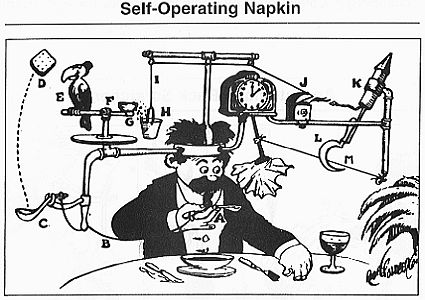When we look at our GTM strategies, ideally, we are leveraging systems thinking. We’re not just optimizing isolated functions or hitting departmental/individual KPIs, but designing how the whole organization works. We look at workflows, roles/responsibilities, OKRs, not just within the functions, but how they interact with other functions and the rest of the organization.
Too often, we fail to do this, we tend to focus on the subsystems. We look at our function, our jobs, our part of the organization; optimizing our abilities to do those jobs and hit our KPIs, at the cost of the performance of the whole organization. For example, Marketing hitting it’s Lead Gen/MQL goals is useless if sales can’t leverage them impadctfully in qualifying new opportunities. Or all the programs Sales Enablement creates are useless if sales isn’t leveraging them effectively. To drive higher levels of performance, we have to simultaneously focus on both the subsystems, what they do and how they interact with each other, and the function of the entire system.
We can extend our “systems thinking” approach to our engagement strategies, our customer experience strategies, our digital engagement strategies. Likewise, with our partners, we need to incorporate them how we work together for maximum impact. All should be part of a broader system of collaboration.
But too often, we are distracted in how we are thinking about these systems and subsystems. They become abstract flowcharts, diagrams, models, and sets of arrows/loops of what we are trying to achieve. We keep tweaking the workflows, moving boxes, fine tuning the processes, creating metrics for measuring and tracking this work. We lose track of what these blocks and diagrams represent. We forget that what we are modeling is how people interact with each other.
At the core of all of this systems thinking, is people! They aren’t blocks on a chart. They are people working with each other, talking, collaborating, creating, reacting, sometimes failing.
People don’t behave like flow charts. They interpret things differently. They have differing goals, incentives, levels of knowledge, and confidence. They operate under pressure, with incomplete information, human bias, limited time. They resist change, protect their own turf, take short cuts, or just forget. They may be new to the organization, not understanding the systems and how they work “in the system.”
They often misunderstand each other, they disagree. They may not trust each other. They may interpret their roles differently. They may be distracted by things important to them, but that have nothing to do with their work. They prioritize their own goals and concerns over those of others, not because they are malicious, but because of how we are wired to behave.
As a result, our well designed systems are messy when they hit reality! They are broken, not necessarily because of bad design, but they depend on the interaction of humans doing very human things.
We don’t fix these systems by moving the boxes around on a flow chart. We fix them by understanding how the people in the system experience it. How do they interpret their roles, how do they communicate, how do they build trust, how do they achieve that which is important to them? How do we accommodate mistakes, failure, differences in understanding?
We need to design for human variability, not idealized behaviors.
I’ve written about friction. Here we think about, “Are our systems designed to handle the friction, the disagreement, the ambiguity, the uncertainty?”
What we need to recognize is that it is not the design that creates the value, it’s the interaction.
Afterword: Here is the AI generated discussion of this post. At first I thought they were going way off course, but they got back on topic. Enjoy!

Leave a Reply